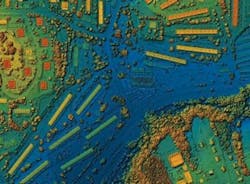Exploring Advanced Optics for LiDAR Technology
In recent years, LiDAR technology has experienced remarkable advancements, revolutionizing various industries with its precise sensing capabilities. From mapping terrain to enabling autonomous vehicles, LiDAR systems rely heavily on sophisticated optics tailored to specific applications.
LiDAR, an acronym for Light Detection and Ranging, operates similarly to radar but uses laser pulses instead of radio waves. These pulses are directed towards objects or surfaces, and the system calculates the precise distance based on the time it takes for the pulses to return. This fundamental principle allows LiDAR to create detailed 3D models and accurate topographical maps.
Custom Optics for Enhanced Performance
The versatility of LiDAR systems lies in their ability to adapt to different environments and tasks, which necessitates the use of custom optics. Optimal performance is achieved by selecting lasers in the UV, visible, or near-infrared (NIR) spectrum depending on the specific requirements of the application. For instance, military applications often prefer Er-doped fiber 1550 nm lasers for their safety and effectiveness with night vision goggles.
